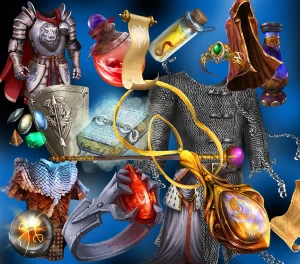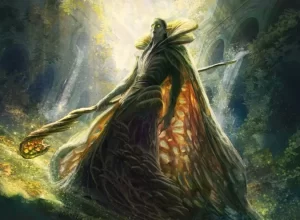
Crafting Pathfinder Open Worlds with Minimal Preparation
In the vast and imaginative realm of Pathfinder, the sandbox campaign stands out as a style uniquely its own. Evoking the concept of "open world" adventures popularized by video games, sandbox campaigns offer players unparalleled freedom. Rather than following a rigid, preordained narrative, players in a sandbox game have the liberty to explore the world, shape their destiny, and drive the story forward.
At the heart of a sandbox campaign is player-driven exploration. Unlike linear narratives where events and encounters follow a set sequence, a sandbox setting teems with myriad possibilities. The players decide their paths, whether they want to delve into deep dungeons, engage in political intrigue, or simply explore a vast, mysterious world. The onus is not on the Game Master (GM) to dictate the plot, but to facilitate and adapt to the players' choices.
The world in such campaigns is dynamic, shifting and changing based on player actions. Rather than a static backdrop, it's a living entity that evolves. Towns might flourish or fall, alliances could be forged or fractured, and ancient powers may awaken-all based on decisions made at the gaming table.
Creating this sense of freedom and dynamism doesn't mean a GM has to spend countless hours in preparation. In fact, a sandbox campaign can be set up with minimal effort. Here's how:
Start with a Single Location
Begin by crafting a central town or village, which will serve as the players' home base. This locale should feature a few key non-player characters (NPCs) with their unique personalities, aspirations, and perhaps even secrets. These NPCs will be the initial touchpoints for the players, offering them quests, information, or trade.
Introduce Varied Plot Hooks
Instead of relying on one central story arc, sprinkle multiple plot hooks throughout the game world. These could take the form of mysterious rumors, legends of hidden treasures, NPCs seeking assistance, or signs of looming threats. By offering a variety of story threads, players can pick and choose which ones they wish to follow, creating their unique narrative fabric.
Embrace Randomization
A GM's best friend in a sandbox campaign is randomness. Use random encounter tables, loot generators, and other tools to conjure up unexpected challenges, rewards, or twists. This not only minimizes preparation time but also adds an element of surprise to each session.
Adapt and Evolve
The beauty of a sandbox is its organic nature. As players make choices, delve deeper into certain mysteries, or form bonds with particular NPCs, be prepared to develop those elements further. If they express interest in a previously unmentioned region, take the time between sessions to flesh it out a bit more for their next adventure.
Listen and Collaborate
After each gaming session, take a moment to discuss with your players. Understand what they enjoyed, where they wish to go next, and what elements of the story intrigue them most. Their feedback will provide direction, making preparation for subsequent sessions targeted and efficient.
Leverage Pre-made Content
Remember, you don't need to craft everything from scratch. The Pathfinder community is vast, with countless modules, maps, and resources available. Don't hesitate to integrate pre-made content into your sandbox, adapting it to fit your narrative and world.
In essence, a sandbox campaign in Pathfinder is about providing a broad framework, then allowing player choices to flesh out the details. With a combination of improvisation, player feedback, and the occasional pre-made resource, even the busiest GM can craft an expansive and engaging sandbox world. It's a testament to the flexibility and depth of the Pathfinder system, where the only limit truly is one's imagination.






